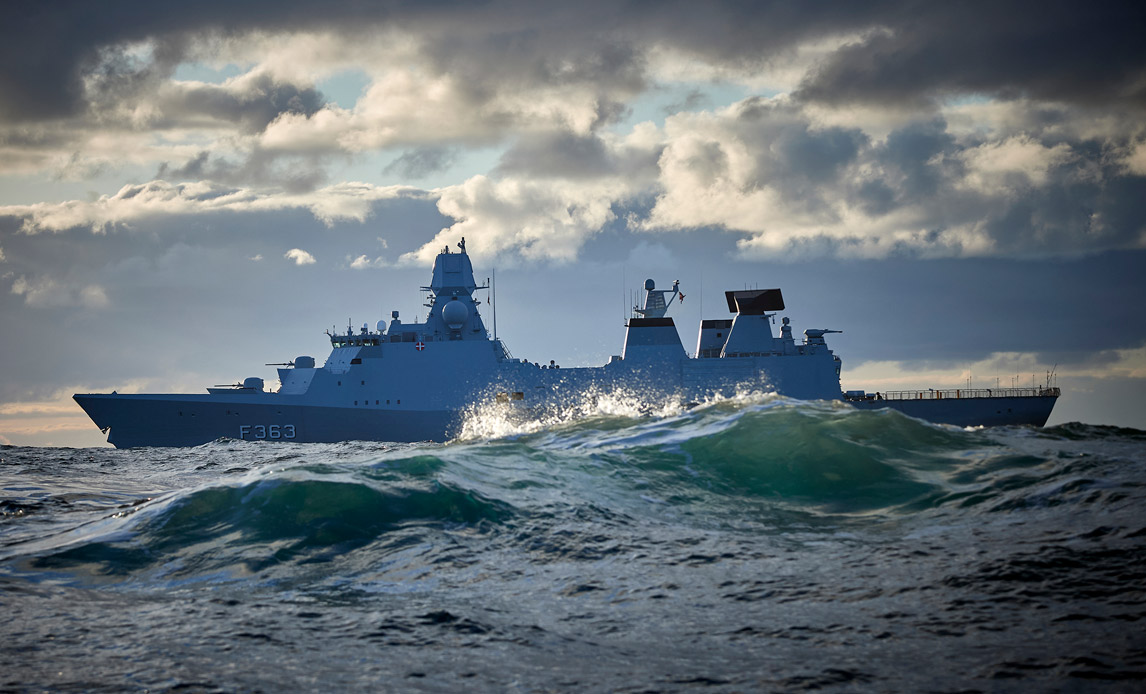
Royal Danish Navy frigate HDMS Niels Juel F363 (Danish Ministry of Defence)
Correction: This article was updated 06/13/23 at 7:36 am ET to reflect an accurate currency exchange of 40 billion Danish Kroner equivalent to $5.8 billion
BELFAST — Denmark could be on the way to procuring new submarines as it looks to bolster maritime capabilities and deter Baltic Sea expeditions by Moscow.
The Scandinavian nation divested its fleet of submarines in 2004 but lawmakers are actively considering whether to acquire them again or rely on “close cooperation” with “friends” to deliver such capability, according to Michael Aastrup Jensen, chair of Denmark’s foreign policy committee.
He said during a Hudson Institute event today in Washington that the submarine discussions are happening “right now” as part of a wider political examination of future Danish defense requirements.
“Denmark is very strategic, meaning that all Russian Navy vessels have to sail through our waters if they come out from St. Petersburg or Kaliningrad and therefore we need to beef up our defense in depth, which is a completely new awakening for us,” said Aastrup Jensen.
In 2022, Copenhagen pledged investment of 40 billion Kroner ($5.8 billion) for new naval ships to be built “within the coming years” and at the same time committed to developing a stronger “security of supply” with national maritime suppliers.
The latest submarine discussions coincide with the Royal Danish Navy close to announcing a replacement for ocean patrol vessels under the Thetis‐class frigate replacement program. A decision is expected imminently as part of Denmark’s most recent Defence Agreement — a document setting out a list of capabilities to be acquired over a ten year period.
RELATED: Danish defense minister: New status quo will ‘move NATO to the north,’ with Baltic emphasis
The war in Ukraine has triggered a wide range of changes in Denmark’s defense posture, not least a June 2022 referendum ending the country’s European Union opt-out clause from security and military matters. Efforts to increase defense spending have been significant too.
“Prior to the the invasion [of Ukraine] we were approximately spending 1.35 percent of our GDP on defense but this year we will reach 2 percent,” said Aastrup Jensen. “In a very short amount of time we have reached the floor, because we are fully agreeing that this should be the floor not the ceiling. If NATO and allies agree [at the Vilnius Summit] a higher target of 2.5 or 3 percent we have already stated that we will also reach that as soon as possible.”
Copenhagen is also part of the European Leopard main battle tank coalition and has agreed to donate 19 Caesar artillery systems to Ukraine. More recently it has backed plans for F-16 fighter jets to be sent to Kyiv.
Aastrup Jensen said that surplus F-16s belonging to the Danish Air Force would be available to send to Ukraine once F-35A deliveries begin this fall, but he argued that it had taken far too long for the Biden administration to approve a decision allowing allies to train Ukrainian troops on the fourth generation jet.
“It is my intention and I think with broad support in parliament, that we can start up the training of F-16 teams, and thereafter a supply of F-16s to Ukraine,” added Aastrup Jensen. “Ukrainians have so much courage … but they need air power.”
France, Germany ink deal on way ahead for ‘completely new’ future European tank
Defense ministers from both countries hailed progress on industrial workshare for a project that they say “will be a real technological breakthrough in ground combat systems.”

























